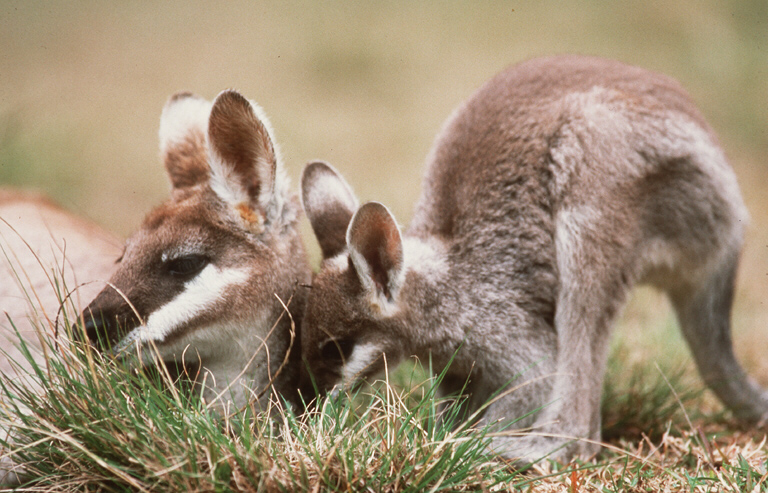Whiptail Wallaby (Macropus parryi) {!--긴꼬리왈라비--> Photo: Glenn Threlfo
Lamington National Park, Australia
http://lamington.nrsm.uq.edu.au/
Whiptail Wallaby
Macropus parryi
DESCRIPTION
Size:
Head & body length: 900 mm
Tail Length: 940 mm
Weight: 16 kg
Identification: Fur is a uniform grey above, white below with a prominate white face stripe and ear tips. This wallaby has a long, thin tail.
Call/Song: Makes a soft cough (indicating fear), a hiss/growl type sound (by females as a defensive call) and a soft clucking (by males when courting).
DISTRIBUTION
Found in eastern Australia, from Cooktown (Queensland) to north-eastern New South Wales.
Habitat: Dwells in open forest with a grass understory in hilly country.
BEHAVIOUR
Movement: A diurnal animal that with maximum feeding activities at dawn extending into early morning. During the hotter part of the day this wallaby retreats to the shade before resuming feeding in the late afternoon.
Feeding: Grazes on grasses and other herbaceous plants (for example, ferns). Seldom drinks except during drought.
Breeding/Nesting: Courtship of the female involves the dominate male and a group of subordinate males following the female. The dominate male will keep other males away by chasing and a ritual of pulling up grass while facing the opposing male.
Other Common Names: Pretty- face wallaby, grey-faced wallaby, grey or blue flier.
Status: Common.
REFERENCES
Queensland Museum (1995) Wildlife of Greater Brisbane, Queensland Museum, Brisbane.
Strahan, R. et al. (1995) The Mammals of Australia, Australian Museum/ Reed New Holland, Sydney.
